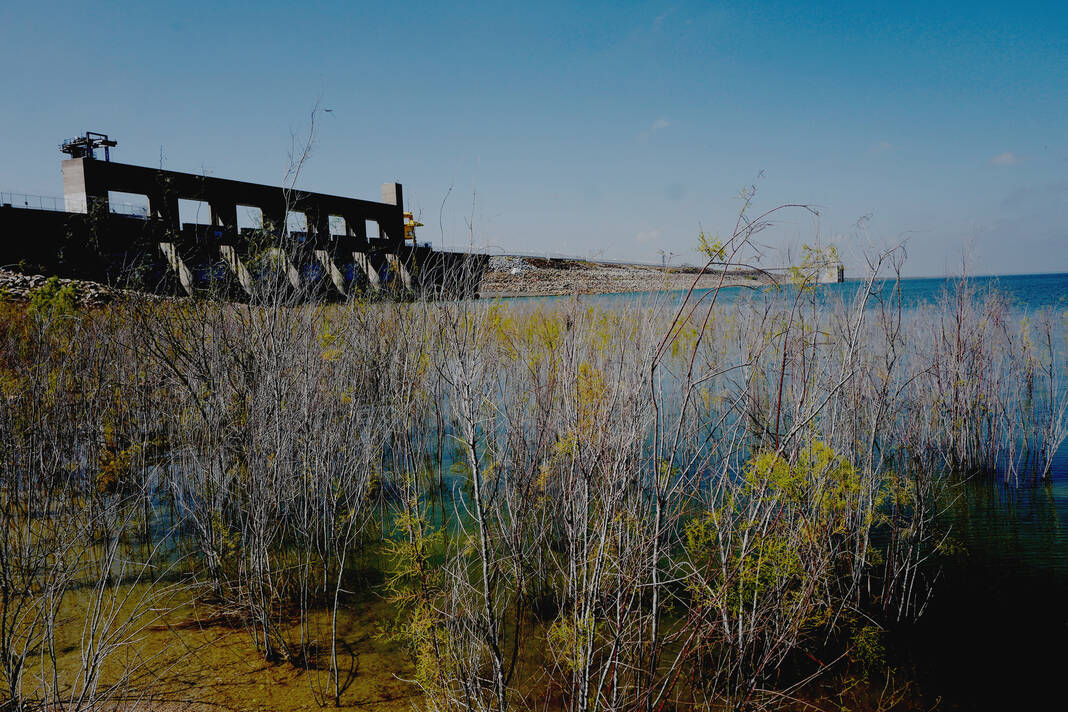|
Only have a minute? Listen instead
Getting your Trinity Audio player ready...
|
As water levels continue to plummet at the two international reservoirs that supply the Rio Grande Valley with water, concern from local and federal leaders continues to mount.
It began on Tuesday, when Willacy County officials joined their counterparts in Hidalgo and Cameron counties to declare a state of disaster due to the ongoing drought.
Then, on Wednesday, the city of Edinburg raised an alarm of its own by stepping up to the next state of its drought contingency management plan.
“Due to ongoing drought conditions, the City of Edinburg is entering Stage 2 Water Conservation efforts effective May 6, 2024,” the city stated in a news release.
Edinburg officials specifically cited Mexico’s continued non-compliance with a 1944 water sharing treaty as the impetus for implementing the mandatory water conservation measures.
“Several factors, including a lack of rainfall, Mexico’s scarce delivery of water under the terms of a 1944 water treaty, and the combined water level at the Falcon and Amistad Dams, require that mandatory compliance begin next week,” the news release stated.
According to data published by the International Boundary and Water Commission, or IBWC, the U.S. portion of water stored at Amistad International Reservoir has fallen to just 21%, while at Falcon International Reservoir, that portion has fallen to 16%.
The IBWC publishes the near-real-time data as part of its daily reports on Rio Grande flow conditions.
The precipitously low amounts of water at both reservoirs represent some of the lowest levels since the dams were built, according to meteorologists with the National Weather Service at Brownsville.
The water levels at Falcon have dropped by just over one percentage point within the last week, according to data published by Water Data for Texas, a division of the Texas Commission on Environmental Quality, the state agency responsible for overseeing Texas’ water resources.
However, in comparison to the same time last year, the water at Falcon has decreased by nearly 50%, Water Data for Texas shows.
The drop is slightly less severe at Amistad, where water levels held steady over the last week.
Nonetheless, the future of the Valley’s water supply remains a top concern for both local and federal officials alike.
To that end, on Thursday, Sens. Ted Cruz and John Cornyn filed legislation urging the Department of State to take action urging Mexico to comply with the binational water treaty.
“These shortfalls have resulted in acute water shortages across the Southwest, and have been particularly devastating to Texans and Texas farmers,” Cruz said in a news release announcing the bill’s introduction.
Likewise, Cornyn also warned of the dire consequences that continued water shortages will have on Texas farmers. But, the senator added a new warning about Amistad’s ability to generate power.
Without water deliveries from Mexico, “the Amistad reservoir (is) in imminent danger of falling below the water level needed to generate power for South Texans,” Cornyn stated.
Though the text of the bill, dubbed S.4253, is not yet available, it is likely very similar to a bill the two senators filed last fall.
“The Secretary of State shall use the voice, vote, diplomatic capital, and resources of the United States to ensure that United States diplomats and officials … are able to advance efforts seeking compliance,” that bill, introduced in September 2023, reads.
The language is similar to a House bill introduced in February by U.S. Rep. Monica De La Cruz, R-McAllen, and cosigned by U.S. Rep. Vicente Gonzalez, D-Brownsville.
De La Cruz called the continuing water crisis “unsustainable” while addressing her colleagues on the House floor in late March.
Meanwhile, back in the Valley, the NWS published its medium-range weather outlook for the next three months. At the top of the projections were expectations for continued high temperatures, little hope of rainfall, and a further decline in water stored at the two reservoirs.
“Water restrictions may turn into water limitations for many jurisdictions who rely on the Rio Grande as their water supplier,” Meteorologist Barry Goldsmith stated.
Approximately three-fourths of the Valley’s water supply comes from the Rio Grande.
“A local/regional water crisis is not out of the question by summer if the heat builds as expected, but little rain falls,” Goldsmith further stated.




